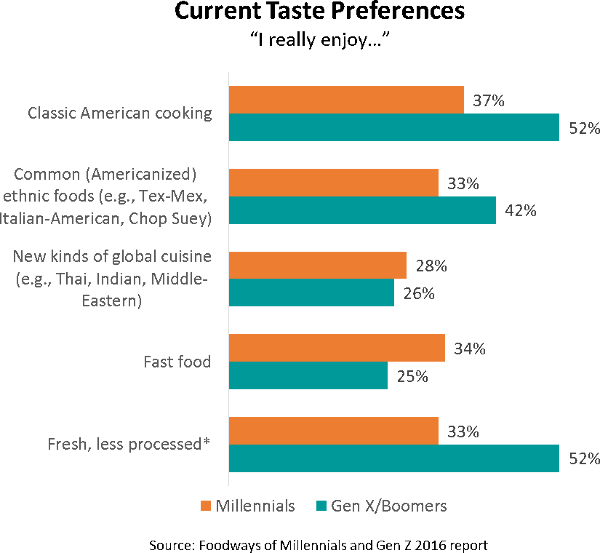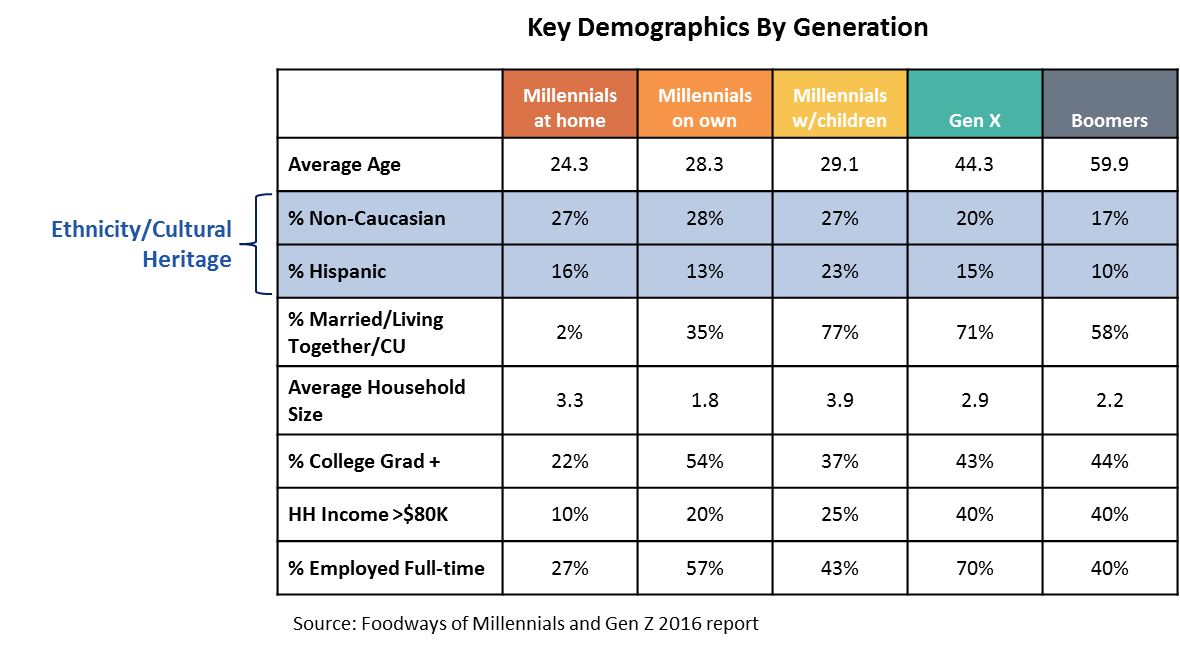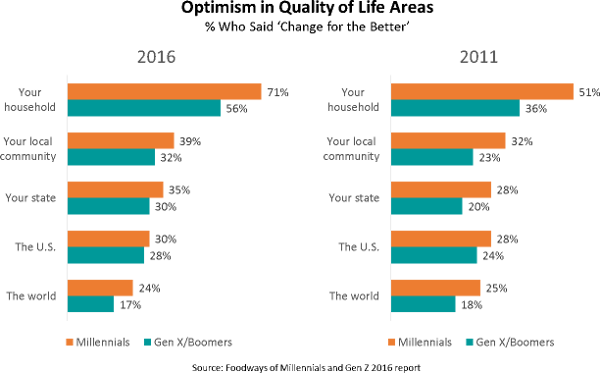MILLENNIAL TRENDSETTERS: CRAFTING THEIR OWN FOOD CULTURE
 Historically, marketers and brand managers have been faced with the challenge of how to reach teens and young adults. Conventional wisdom has long held that tomorrow’s shopping and purchase behaviors are forged in the early, formative years of consumerdom. After all, young shoppers are the beacon of hope for companies and brands in tomorrow’s consumer marketplace. Thus, we can begin to understand the constant fascination with the youngest consumers among marketers and why the preoccupation in understanding modern Millennials has been so acute.
Historically, marketers and brand managers have been faced with the challenge of how to reach teens and young adults. Conventional wisdom has long held that tomorrow’s shopping and purchase behaviors are forged in the early, formative years of consumerdom. After all, young shoppers are the beacon of hope for companies and brands in tomorrow’s consumer marketplace. Thus, we can begin to understand the constant fascination with the youngest consumers among marketers and why the preoccupation in understanding modern Millennials has been so acute.
Most Millennials bid a fond adieu to their teen years long ago (they now range from 19 to 37 years of age) and encompass a complexity of different life stages (some Millennials are in college and some continue to live at home, while others have left home and are starting out on their own, and still others have settled down to form their own families). These life stages impact how Millennials live their lives and choose what they will eat and drink day to day.
Since 2011, The Hartman Group has investigated broad areas of this generation’s lifestyles, values and preferences, including the extensive integration of technology into their daily lives, their leisure pursuits, their politics and how they navigate through today’s marketplace in a variety of categories.
This generation has become a reliable barometer for the future of food culture. In the past five years, what’s changed about this most diverse group of consumers?
Millennials Today
Boomers can no longer hold claim to the top spot as the arbiters of food culture. According to the latest U.S. Census report, Millennials have surpassed Boomers in population size, checking in at a robust 83.1 million (compared to Boomers at 75.4 million) and representing one-quarter of the U.S. population.
Millennials are ethnically diverse, which affords them the opportunity to incorporate eating habits from across many different cultures. This diversity will continue to drive food culture trends around the exploration of authentic, global food experiences. This tacit cultural knowledge influences their dining habits and their food choices, and it allows them to confidently face the vast array of ingredient options available today at even the most basic grocery outlets.
The following table from The Hartman Group’s Foodways of the Younger Generations 2016 report illustrates the key demographic differences among groups.
In the course of five years, Millennials have maintained a brighter outlook on the direction of where things are headed. As the following chart depicts, Millennials are much more optimistic about the future than Gen X and Boomers.
The Millennial cohort began their food journey as most do, learning eating habits from their parents and extended families. However, unlike prior generations, as they were growing up, they received unprecedented exposure to and knowledge about (through the media, government, academic institutions and friends) healthy diets and global cuisine. Now, as they age, they are having their own conversations and discoveries about food via friends, family, their broader social networks and a variety of popular media channels, especially online social media.
As this generation continues to transition from the parental home to the college dorm and eventually on to their own home, each life-stage shift has an influence on their food preferences, their perceptions about health, how they grocery shop, approaches to cooking, good and bad snacking habits, and their food service choices.
The following chart illustrates that Millennials are more likely than older consumers to want to try new kinds of ethnic cuisines while older generations prefer more traditional fare that is fresh.

The Foodways of the Younger Generations report details how Millennials’ health perceptions and food preferences are intertwined. Key among these include:
- Millennials tend to look like older cohorts (Gen X, Boomers) when it comes to health & wellness. Those who have ventured out on their own are more interested in developing healthy eating and exercise habits and in looking for healthy, less processed food. A key exception are those still living at home — these younger Millennials are more similar to Gen Z and are less concerned with how diet impacts their health.
- They can tell the “good” food from the “bad” food. This group has been well-schooled in healthy eating habits. They have an amazing amount of information at their fingertips; they continue to grow their knowledge through friends and a variety of media channels.
- Like the older cohorts, the Millennials who have ventured out on their own are focusing on foods that are minimally processed, organic, with simple and recognizable ingredients.
- Others, especially those still at home, don’t always “walk the talk,” often seeking convenience and indulgent treats, similar to Gen Z teens.
- Millennials (as well as the older generations) believe they eat better than their parents. They believe their choices are healthier, less processed and more natural.
- Millennials without children are the most interested in global cuisines. Millennials with children live scattered, busy, chaotic lives and are often just trying to get a decent meal on the table. Parents’ daily reality of family life and picky eaters makes it harder to be culinary explorers and also gets in the way of healthy eating.
- Myth buster: Millennials like to cook. They enjoy cooking, and 60% claim they do all the cooking in their household. Like the older cohorts, when they cook, most of the time they include fresh ingredients; this is especially true of those Millennial who are parents.
- They are culinary adventurers. Chinese, Thai, Indian, Mexican, Greek, Mediterranean — this cohort is willing to explore global cuisines and try different types of food products, including spices, oils and flavorings.
- The Internet and social media are their go-to resources. Millennials use Google, Facebook and YouTube for recipes, information and research about food products.
 For more about Millennials’ shopping, snacking and eating-out habits, purchase the Foodways of the Younger Generations: Millennials and Gen Z report. Click here to download executive summary and order form: FOODWAYS 2016
For more about Millennials’ shopping, snacking and eating-out habits, purchase the Foodways of the Younger Generations: Millennials and Gen Z report. Click here to download executive summary and order form: FOODWAYS 2016


